
Sign in to your ScreenRant account
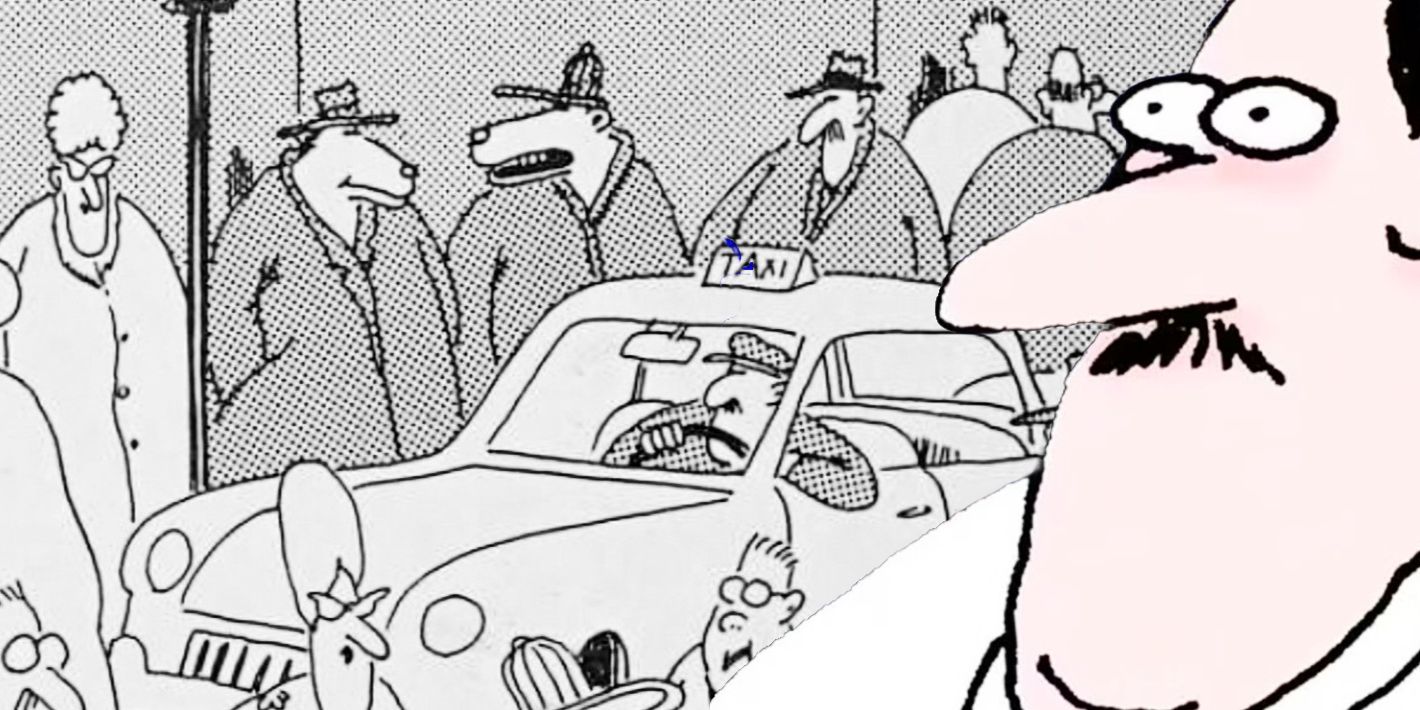
The Far Side forged its iconic status in cartoon history by routinely skewering human culture, with Gary Larson’s warped sense of humor often serving as a prompt for readers to take a step back and reconsider their own understanding of society, from its history to its most deeply ingrained taboos.
Larson lampooned humanity’s highs and lows alike, and he did so in many different ways over the years, coming at his observation of human foibles from a variety of perspectives.
From the literal alien, with The Far Side’s frequent use of extraterrestrial characters, to the most microscopic creatures on Earth, ants and amoeba, Larson’s comedy forced readers to confront the familiar in surprising and unexpected contexts. This led to some of the strip’s most outrageous installments, but also some of its most profound insights.
10 On The Far Side, Evolution Was More Of A Sprint & Less Of A Marathon
First Published: August 25, 1982
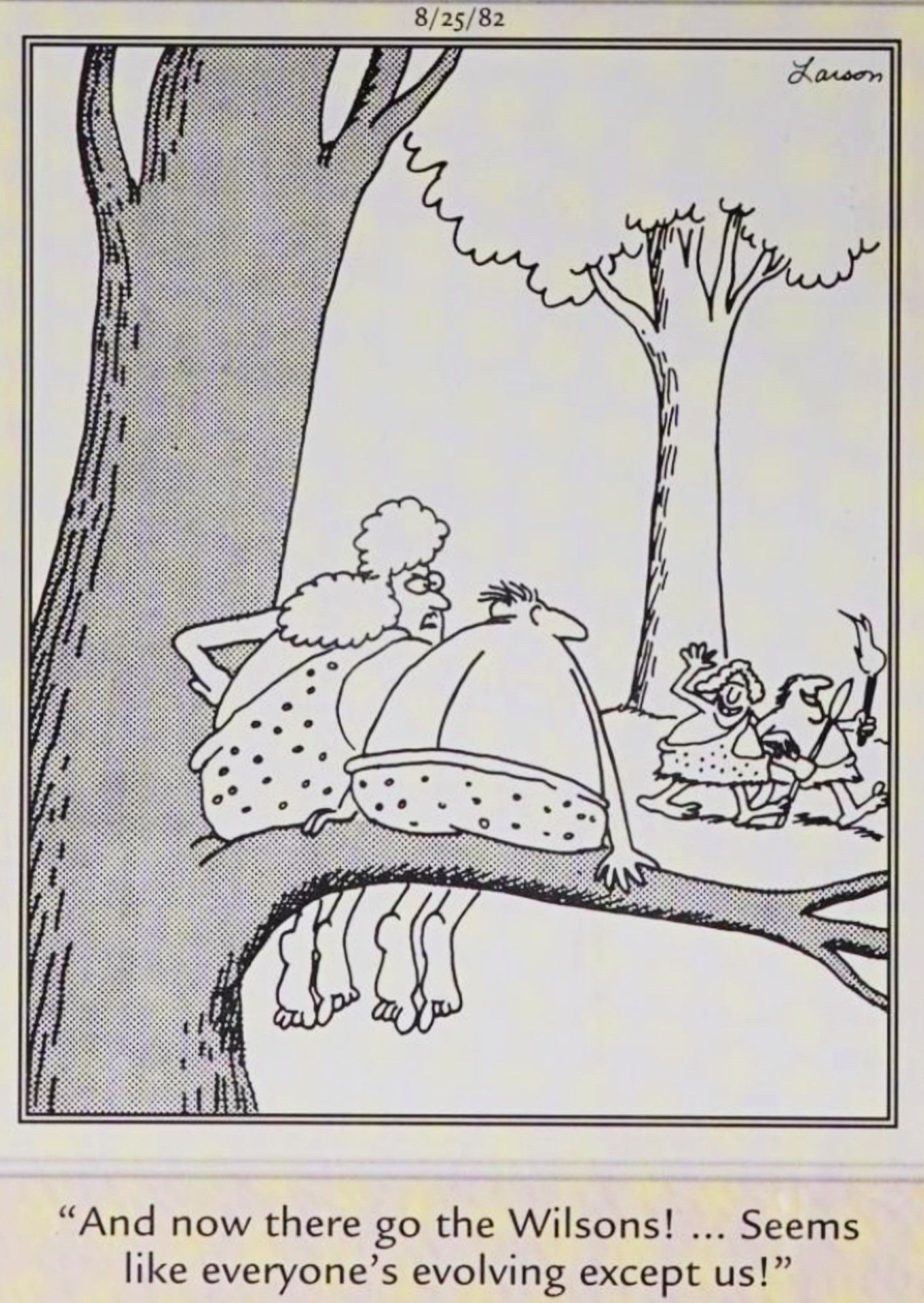
In one of The Far Side's numerous panels starring cavepeople, a prehistoric pair sit on a tree branch and watch as another couple walk upright out of frame on the ground below, smiling as they carry fire and a sharp spear. "Seems like everyone's evolving except us!" complains the female character, annoyed that she and her husband haven't climbed down from the trees yet.
Larson's prehistoric Far Side cartoons offered some of his best commentary on human society, both its origins and its contemporary issues. In this case, the comic also doubles as a joke about feeling as though one's peers have all moved on to bigger, better things without them – something people at almost any point in human history could relate to.
9 The Far Side Draws Attention To The Overlooked Parallels Between Humans & Ants
First Published: April 12, 1984
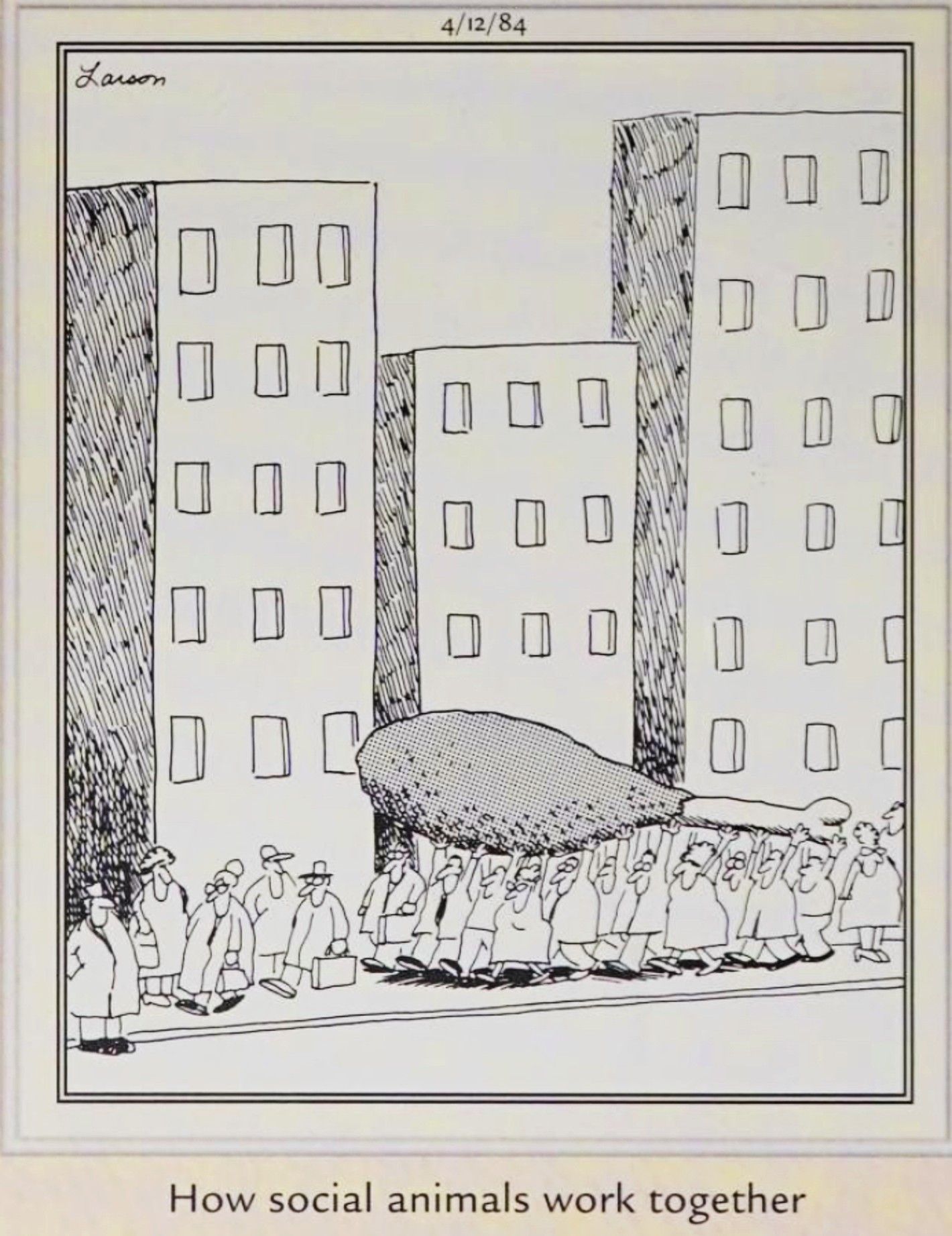
Captioned “how social animals work together,” this panel depicts a chain of humans working in a coordinated effort to carry a giant turkey leg down a city street, as though they were ants.
Ants were common focal characters for The Far Side; Gary Larson often depicted ants engaging in human behaviors, in order to draw this parallel between the two, but here he inverts his own trope, instead illustrating humans engaging in ant-like behavior. Still, the end result is largely the same – and perhaps even more effective. In particular, Larson’s use of this technique is effective at making the reader evaluate what they understand to be the distinction between different forms of life on Earth, while also showcasing the fact that these questions were at the top of the author’s mind as well.
8 An All-Time Great Far Side "Reveal" Shows Humans Can Ignore The Most Obvious Truths If They Want To
First Published: December 24, 1984
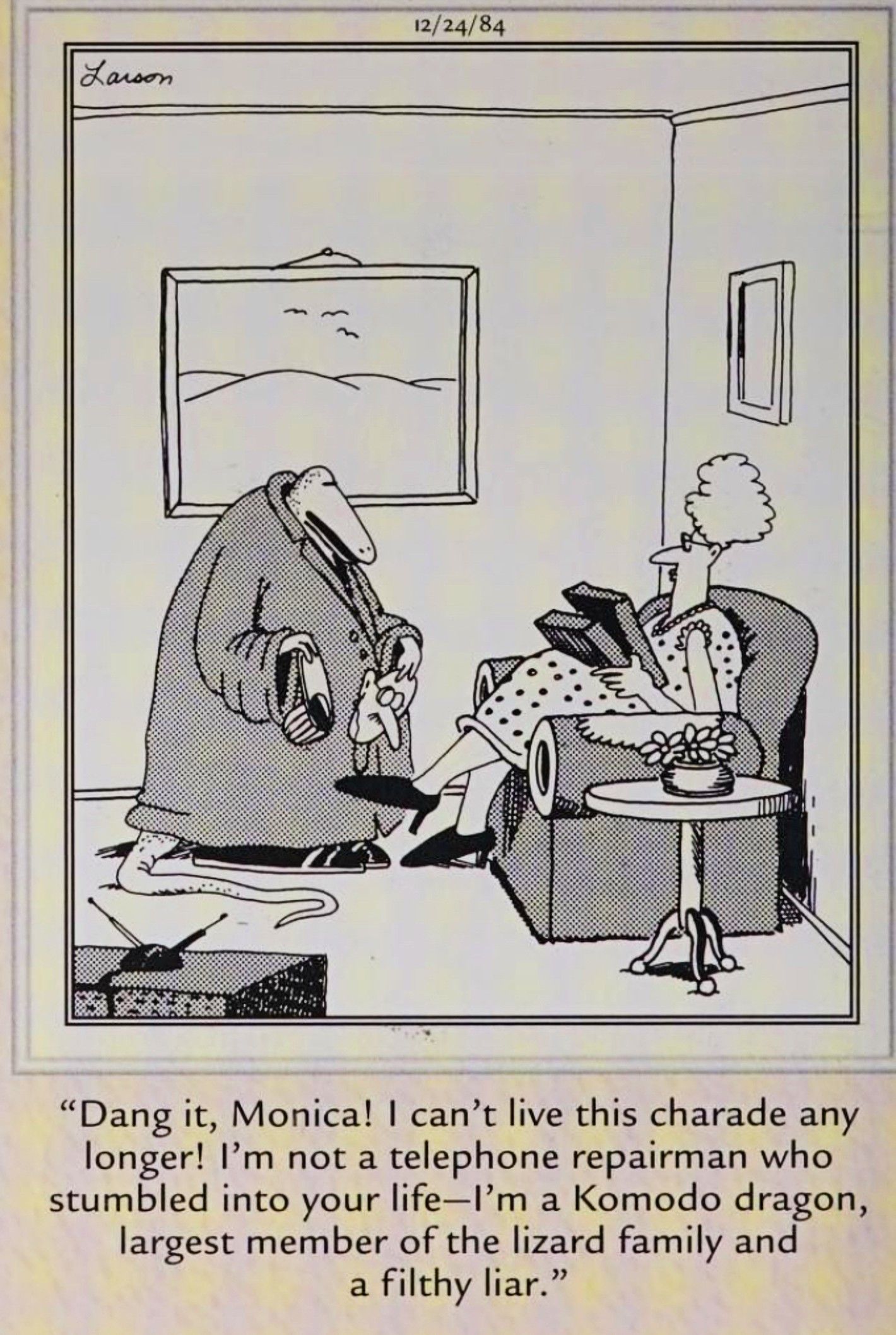
This strange and hilarious Far Side comic features a man coming clean to his lover: he's not really a man, he's "a Komodo dragon, largest member of the lizard family and a filthy liar." This cartoon is memorable because it is bizarre from concept to execution, without question, but it also strikes a surprisingly real chord with premise.
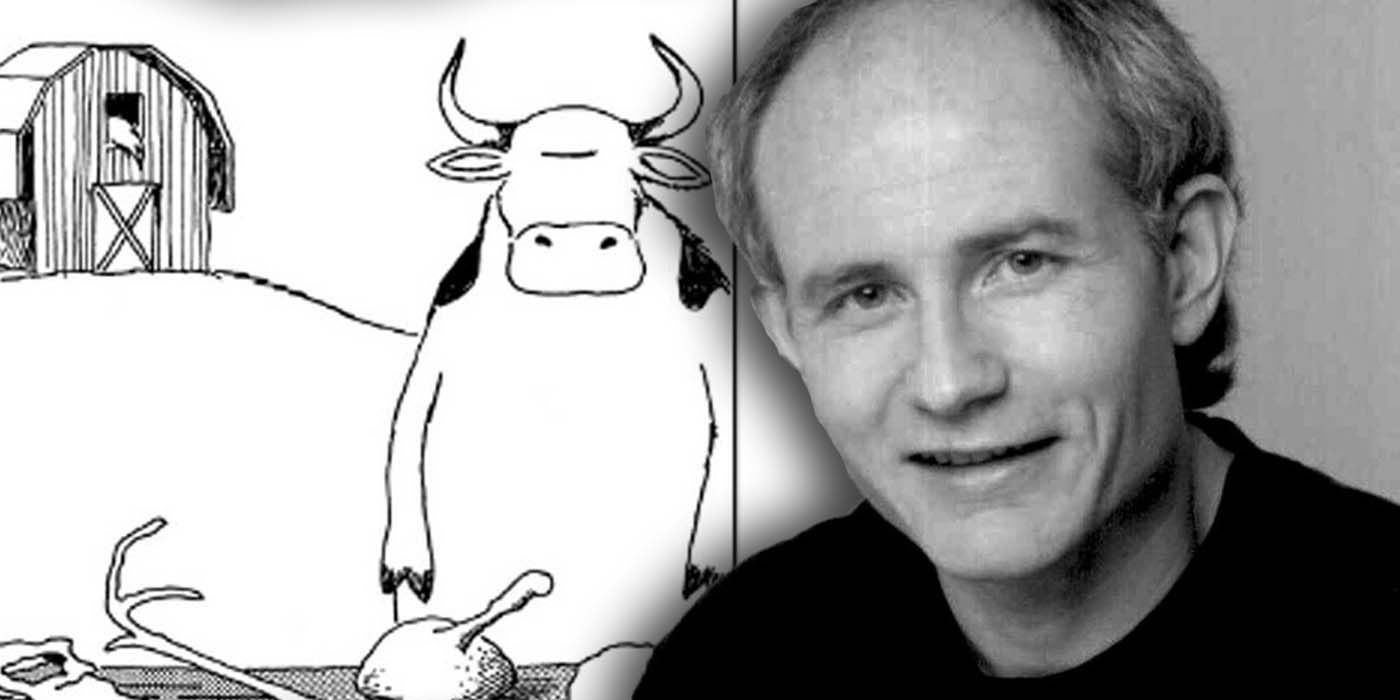
Related
This Early Far Side Comic Was "Cow Tools" Months Before "Cow Tools" Was Published
"Cow Tools" is widely considered the most infamous Far Side comic, but few fans remember Gary Larson made a nearly identical joke months prior.
That is, the joke is an absurd, extreme extrapolation of the idea of a con artist slithering into a vulnerable person's life. In these real-life circumstances, part of the con artist's success can be attributed to their victim willfully ignoring obvious warning signs, and that idea is what Gary Larson seizes on here, in order to deliver an iconic Far Side cartoon, one that feels as though there is more to the story than what Larson delivered on the page.
7 The Far Side's Violent Version Of "Love What You Do & You'll Never Work A Day"
First Published: April 15, 1985
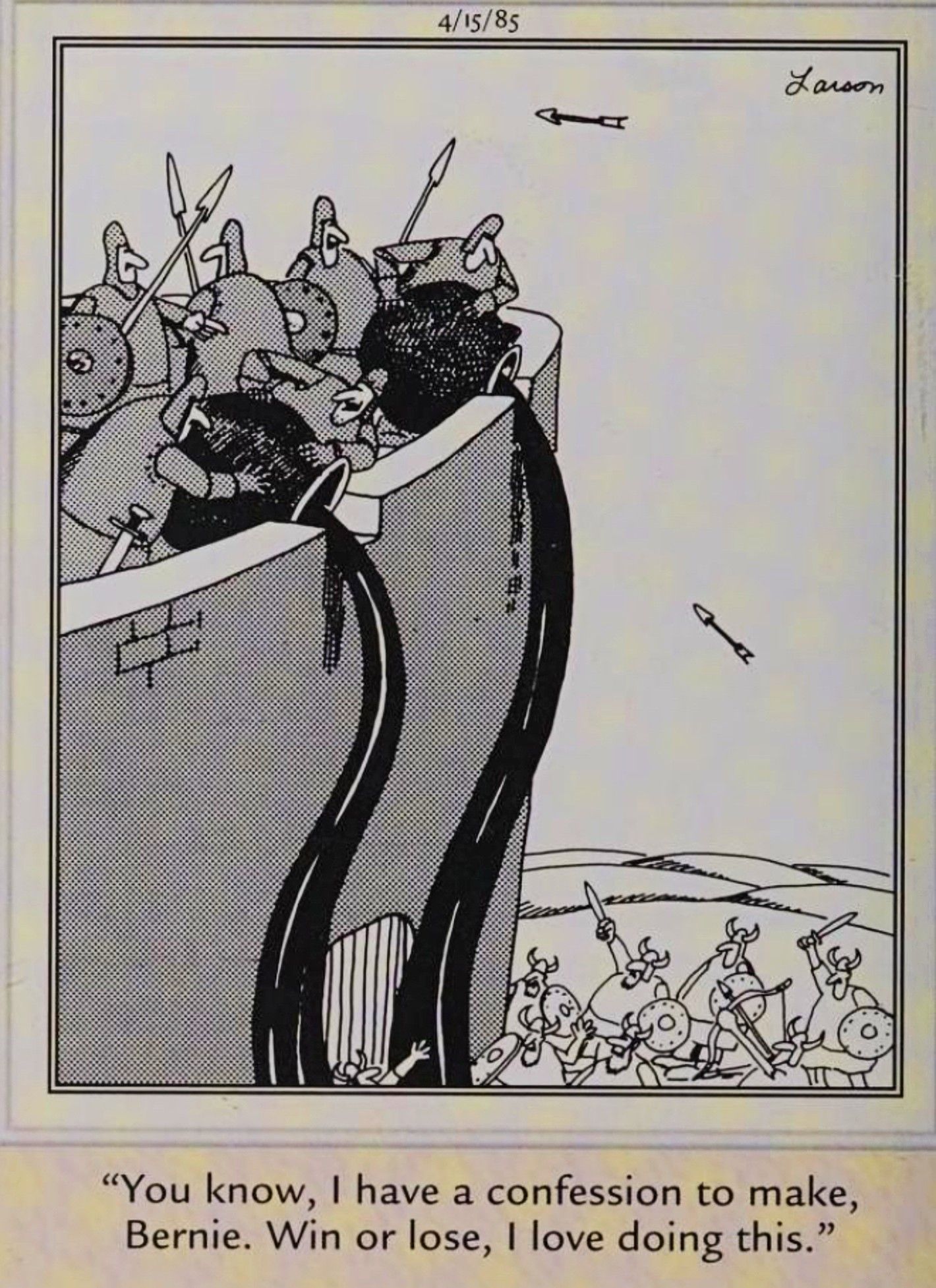
The Far Side made its share of jokes about war and battle, but these jokes often had something more to say about contemporary life as well. Here, a soldier defending the walls of a medieval castle pours boiling hot pitch down onto besieging enemies, while remarking to a fellow soldier, "you know, Bernie...win or lose, I love doing this."
With this punchline, Larson conflates the contemporary idea of "loving what you do" with something timeless: the fact that, while most humans will fight for any number of reasons, from land, to resources, to honor, some people just want to fight no matter the reason. In other words, bloodlust has always been a part of human history, and Gary Larson comments on that here, in his playfully warped way.
6 The Far Side Flips The Script On An Iconic Comedy Prop
First Published: January 23, 1986
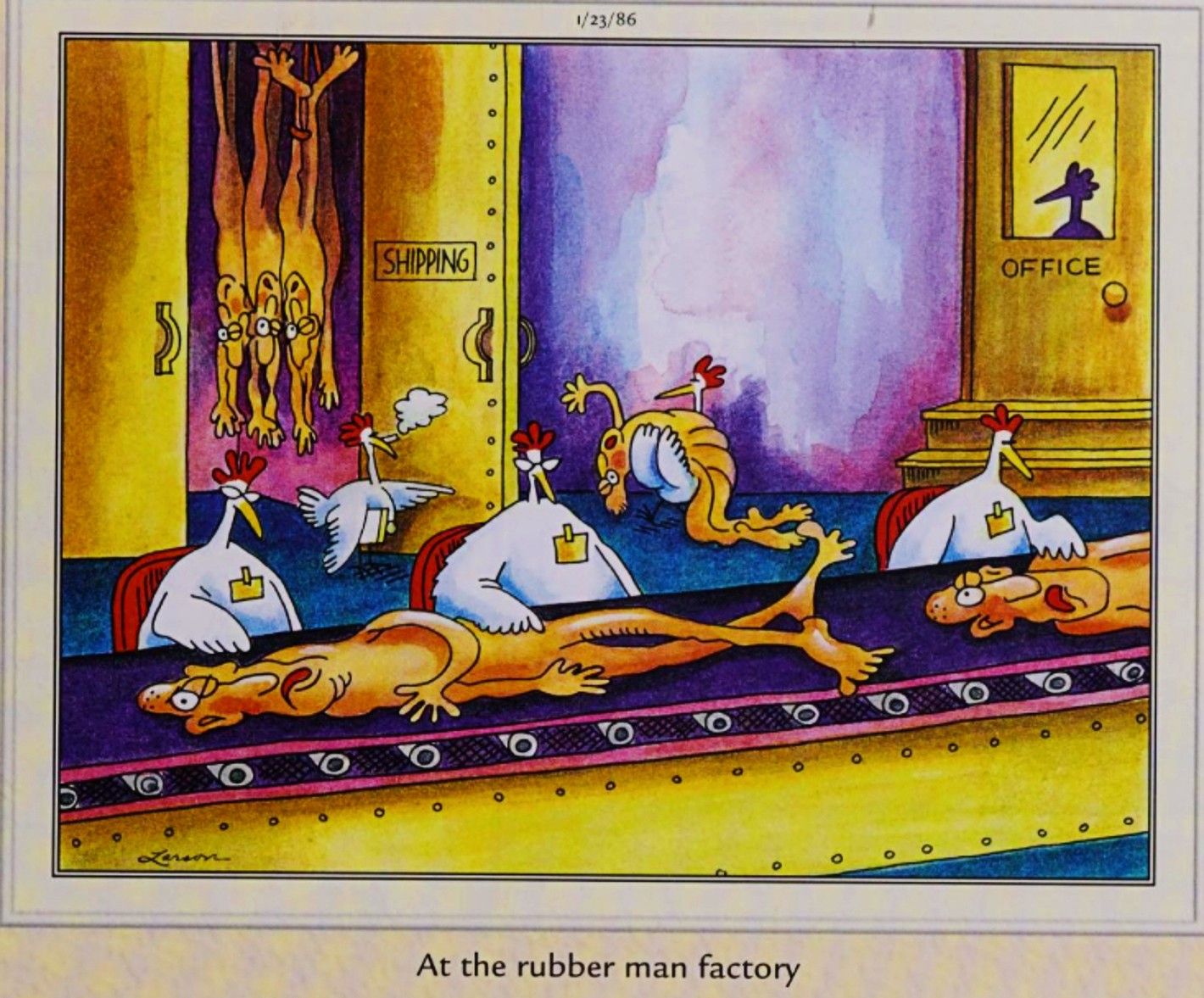
In this Far Side chicken comic, readers get a glimpse of the farm birds hard at work "at the rubber man factory," a complete 180-degree inversion of humankind's most notorious gag: the rubber chicken. This inversion is the extent of the punchline, yet as is the case with most of Gary Larson's cartoons, there is more to unpack here, the more time readers spend scrutinizing the panel.
That is, the cartoon gives readers reason to pause, and question what exactly makes a rubber chicken funny – while a rubber duck, by contrast, has become synonymous with cuteness and innocence. Admittedly, this was not Gary Larson's intention, but it is certainly a byproduct of The Far Side, a part of the reading experience that Larson could neither anticipate, nor avoid entirely.
5 The Far Side Forces Readers To Question What's So Peaceful About Nature, Exactly
First Published: August 7, 1987
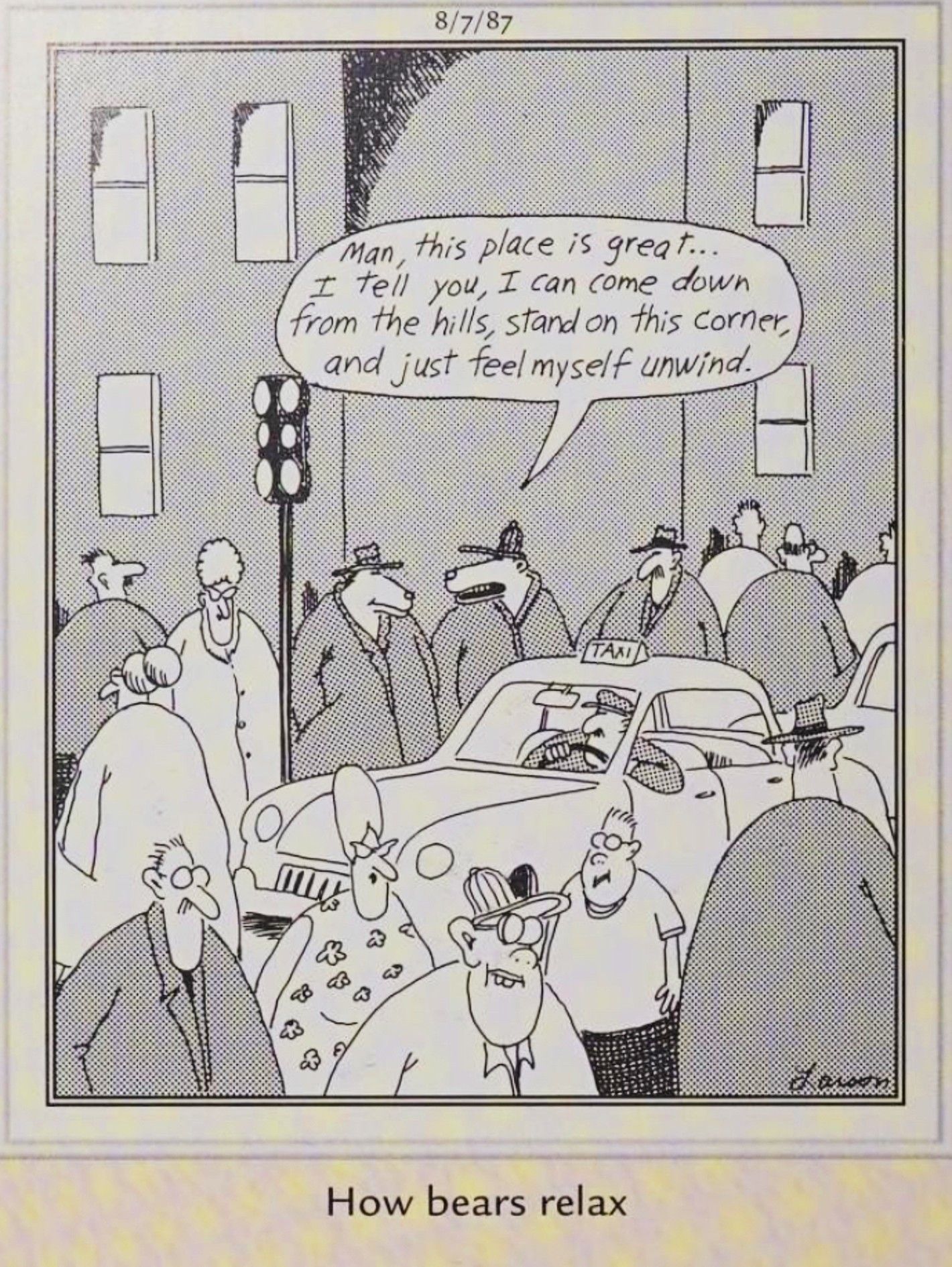
This underrated Far Side cartoon is one of Gary Larson's most effective uses of his "inversion" technique, through which he achieves not just a solid laugh, but also a deep insight into humanity's relationship with nature, something that was always on Larson's mind.
Your changes have been saved

The Far Side Complete Collection
$71 $125 Save $54
Fans of the far side can't pass up this master collection of Gary Larson's finest work. Originally published in hardcover in 2003, this paperback set comes complete with a newly designed slipcase that will look great on any shelf. The Complete Far Side contains every Far Side cartoon ever published, which amounts to over 4,000, plus more than 1,100 that have never before appeared in a book and even some made after Larson retired.
Here, a pair of bears in trench coats stand amid a bustling human city, enjoying a respite from nature – in other words, the exact opposite of how city-dwellers often use nature as a getaway. Nature's inhabitants, of course, know that it is anything but peaceful, but for humans that exist surrounded by so much artifice, the natural world is often idealized. In this Far Side cartoon, Gary Larson draws attention to this by simply, yet skillfully flipping that sentiment upside down.
4 For These Far Side Elephants, The Human Condition Is An Unfortunate One
First Published: January 2, 1988
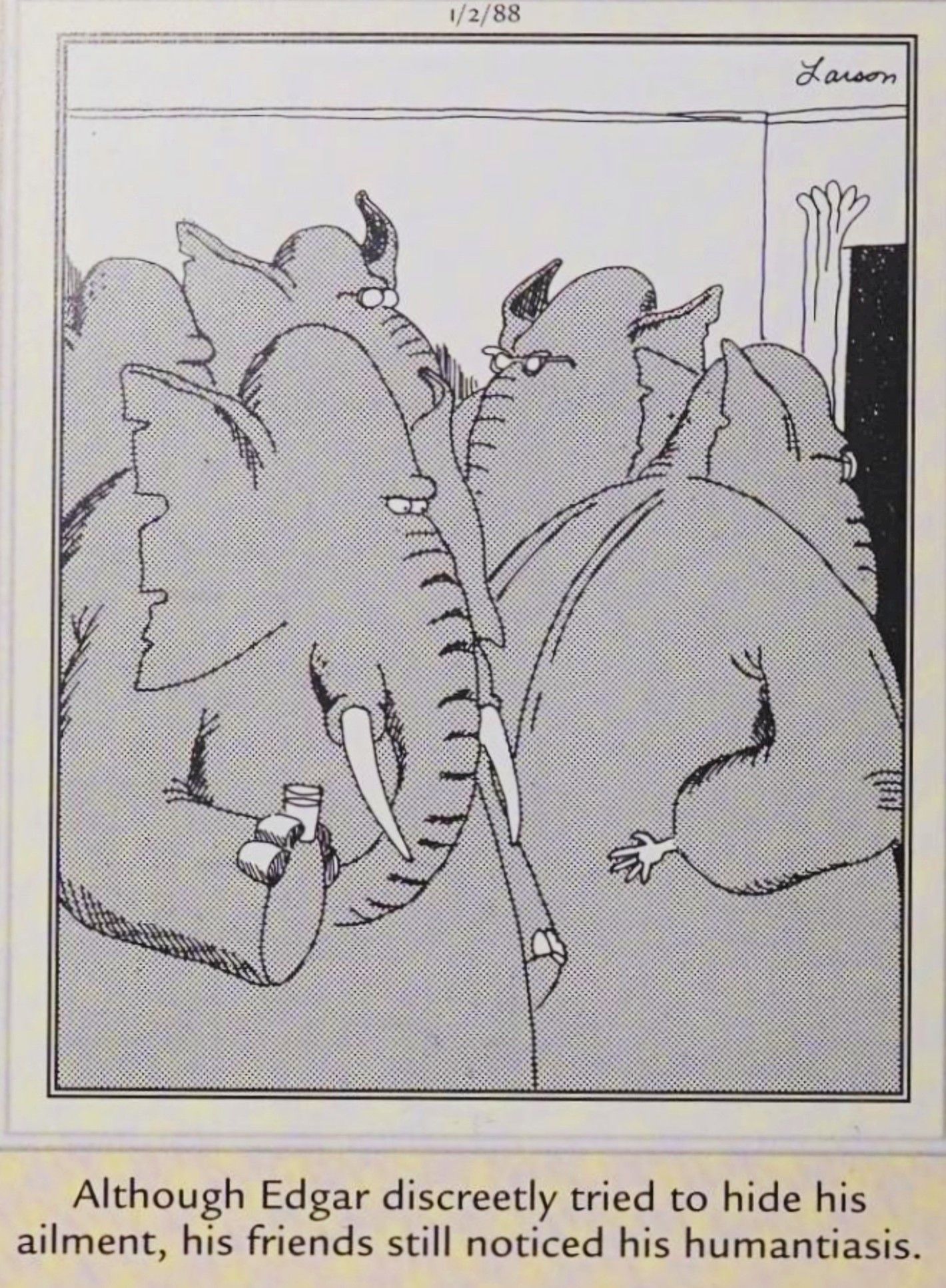
This Far Side elephant cartoon also uses the "inversion" technique, in this case even more directly than the previous entry. "Although Edgar discreetly tried to hide his ailment," the caption reads, "his friends still noticed his humantiasis," as one elephant side-eyes the human-like hand clutched behind the back of another, flipping the idea of a human with elephantiasis in the most literal possible way.
The joke is overt enough as it is, but it also serves as a sly reminder that, to Gary Larson, being human wasn't exactly an enviable thing to be. Sometimes The Far Side could communicate this cold, hard truth to readers in a much more cynical way, but here it is done in the cartoon's more playful vein.
3 Gary Larson Pokes Fun At The Lowest Form Of Business
First Published: April 6, 1990
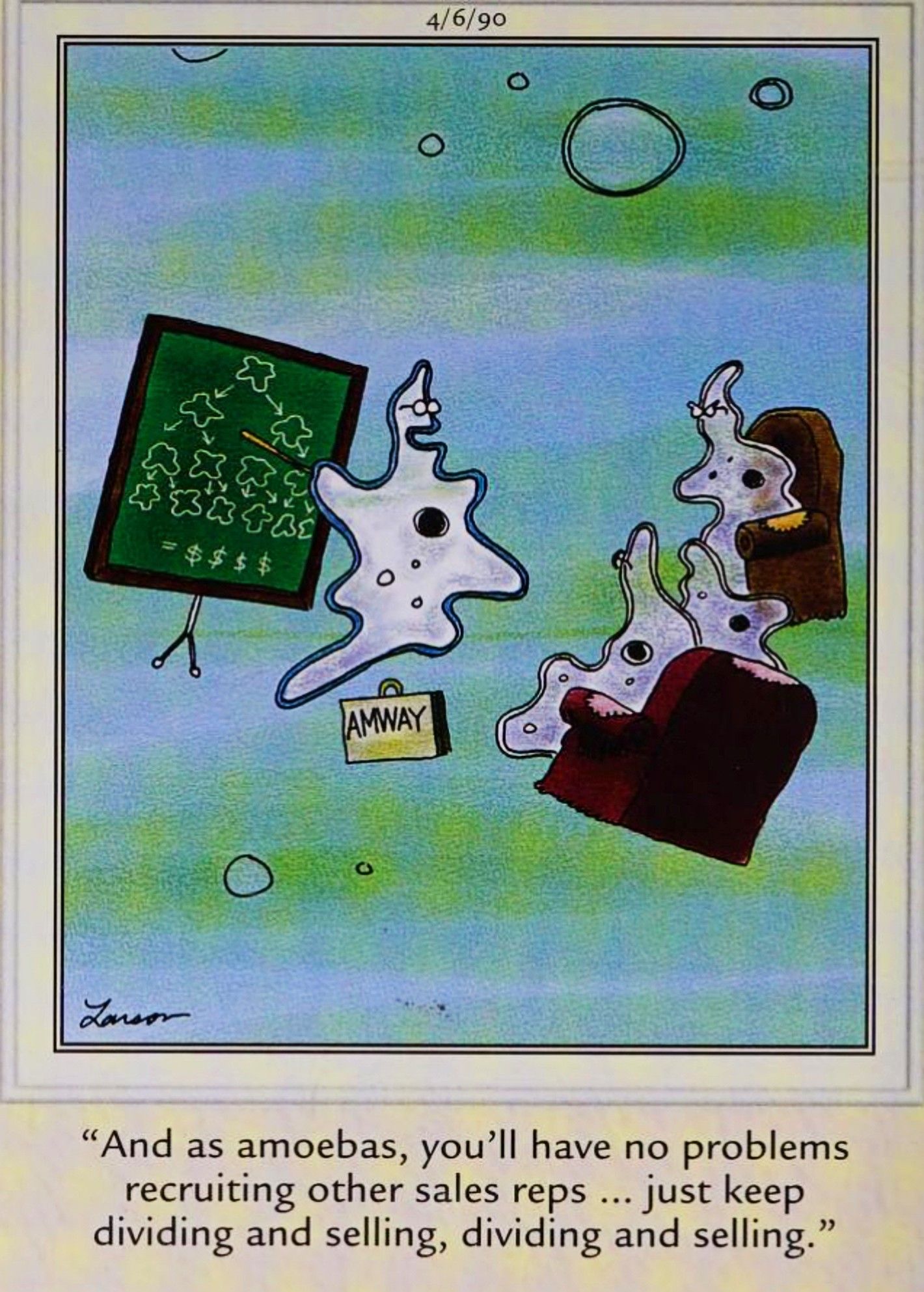
In this Far Side amoeba cartoon, Gary Larson takes a direct shot at Amway, perhaps the most notable multi-level marketing company in American history. Multi-level marketing has a less-than-stellar reputation among American consumers – often, these businesses are pejoratively called "pyramid schemes" – and here, Larson plays on their status as the "lowest" form of capitalist enterprise by making his multi-level marketers actual amoeba.
"Just keep dividing and selling, dividing and selling," one of the single-celled organisms explains to others, pointing out how they are uniquely suited for this business model. It is this kind of Far Side joke that highlights how socially conscious Gary Larson actually was, even if its manifestations in his cartoons were not always as evident as in this one.
2 Gary Larson Offers A Rare, But Potent, Political Far Side Gag
First Published: January 15, 1992
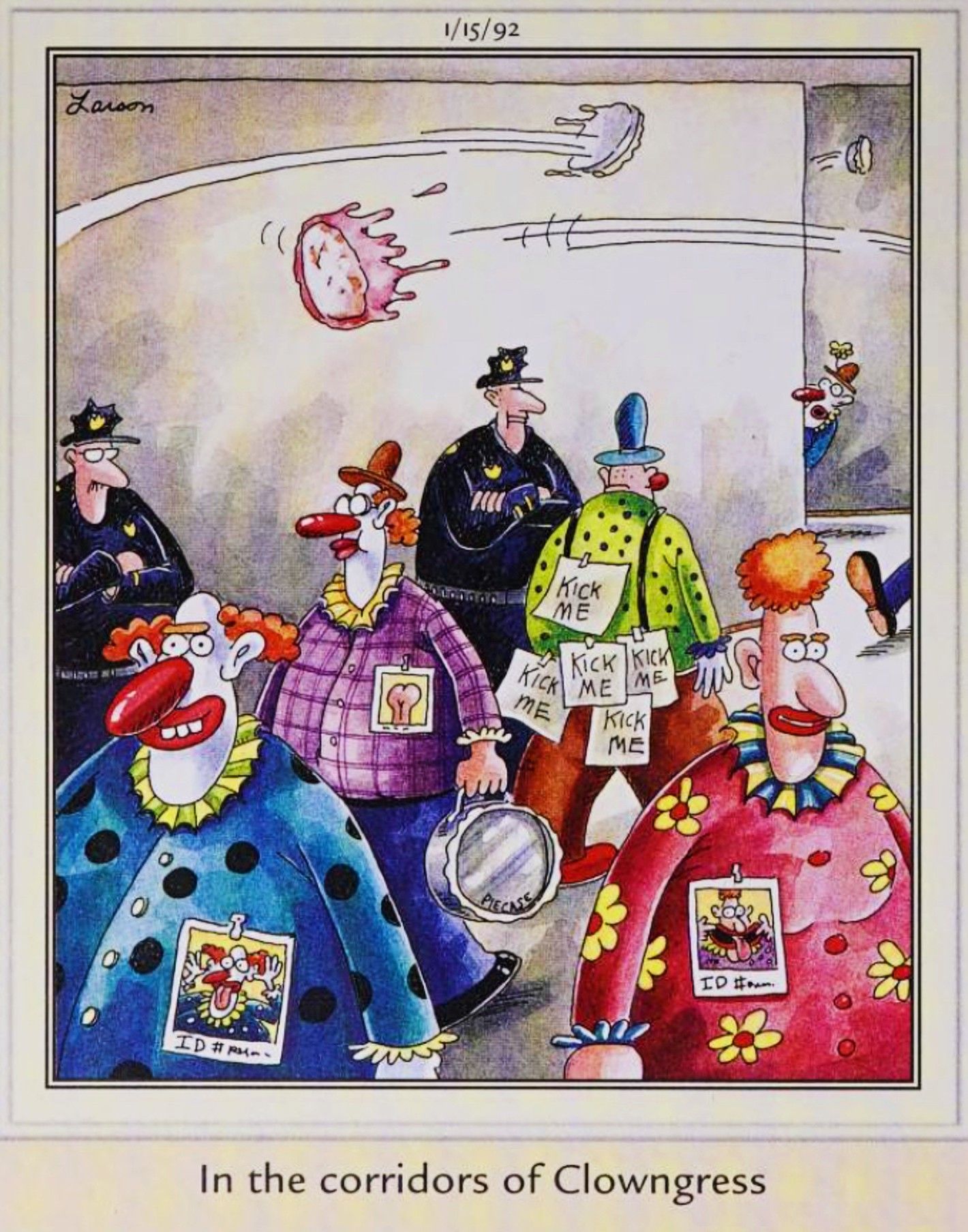
Captioned "in the corridors of Clowngress," this panel is first and foremost a sly, yet strong example of Gary Larson's mastery of wordplay, as he creates a scenario entirely from inserting an "L" and a "W" into the word "Congress." More than that, though, Larson's image of a bustling hallways full of clowns, pies whizzing over their heads, makes an effective political point.
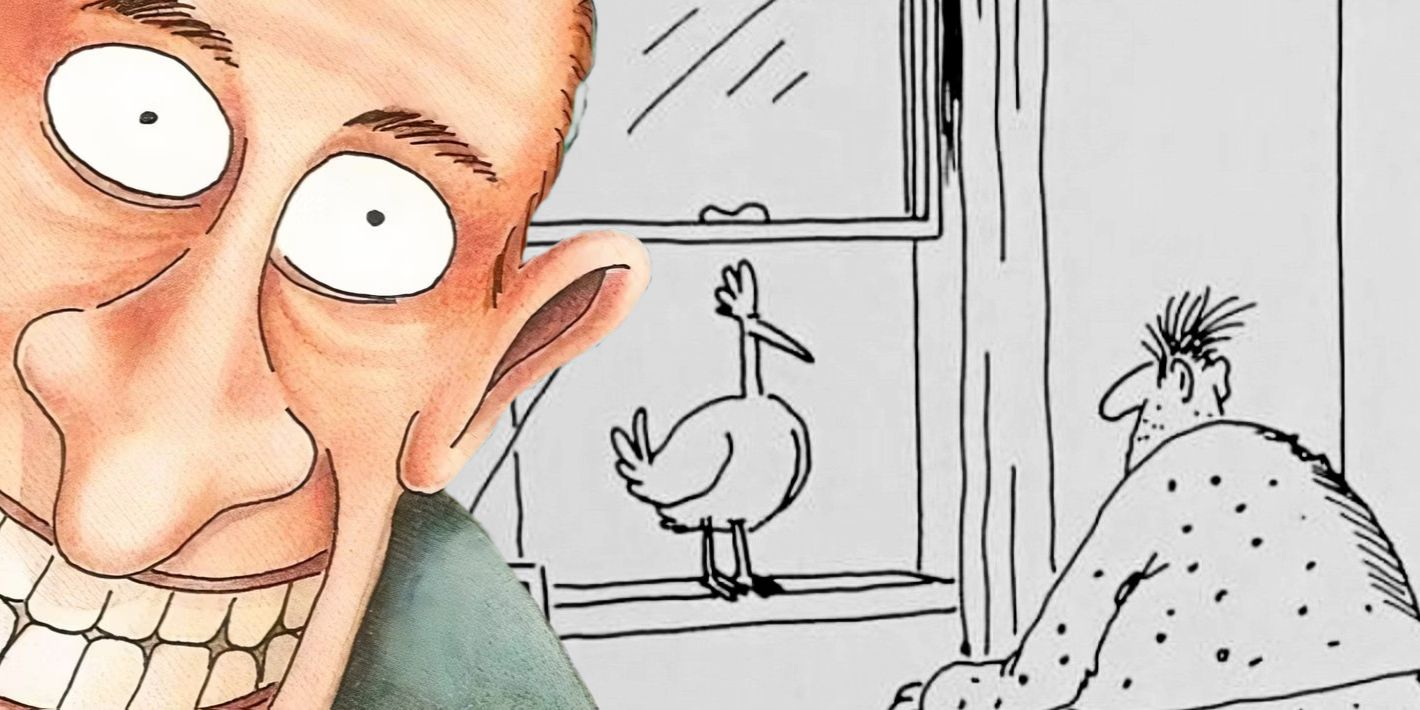
Related
The Far Side’s “Chicken Of Depression” Comic (And How It Shows Off Gary Larson’s Technique Of Taking Things Too Literally On Purpose)
Despite the Far Side's reputation for sowing confusion, Gary Larson's humor was often overly literal, as his "Chicken of Depression" comic shows.
The Far Side was always culturally aware, and socially resonant, but it rarely overtly critiqued politics or political positions. It is important to note that, with this Far Side, Larson isn't necessarily calling politicians clowns himself, but rather offering an insightful observation about how the average American views their leaders in Washington, which is actually what makes it such an astute bit of commentary.
1 Families Were Always Rising And Falling On The Far Side
First Published: August 30, 1993
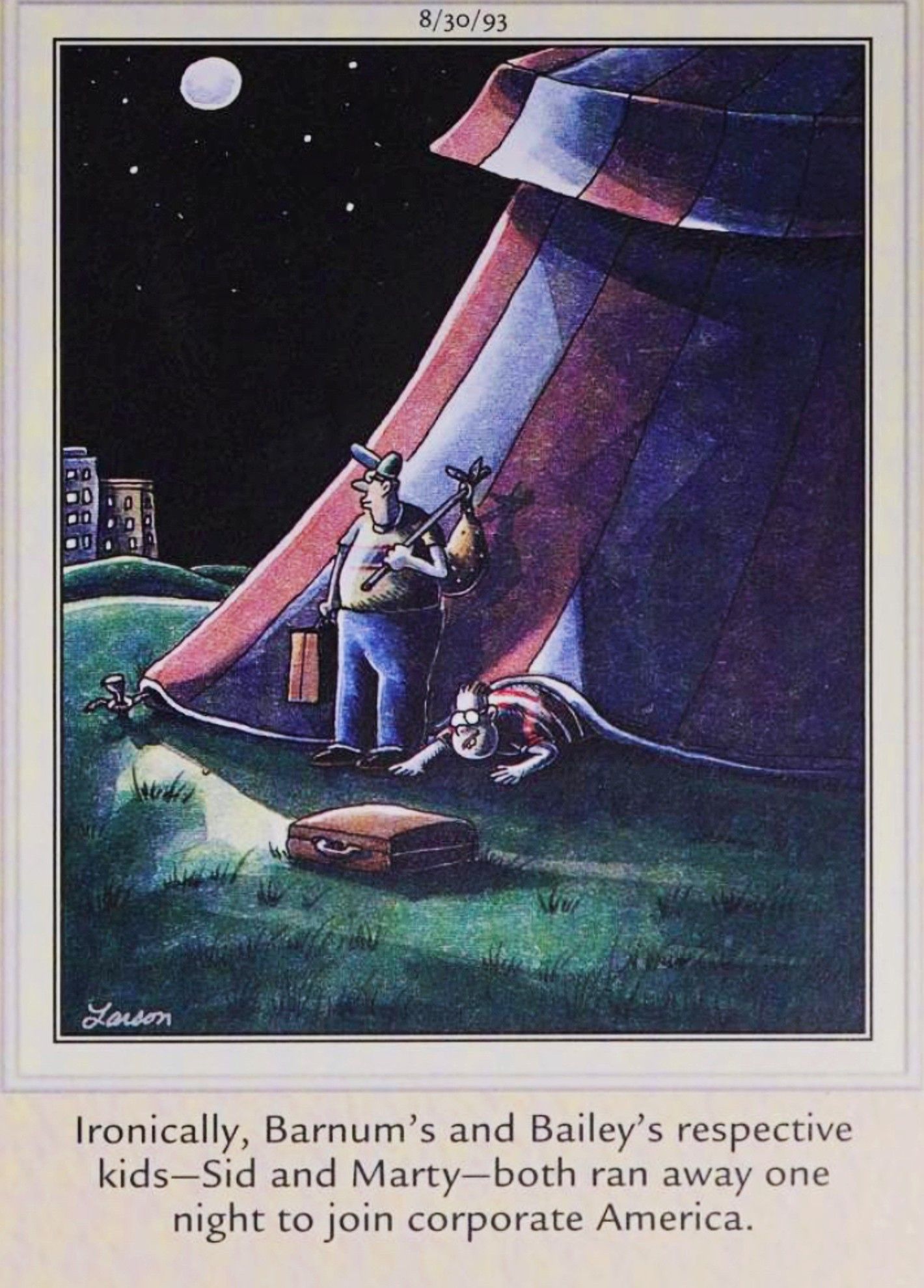
With this cartoon, Gary Larson offers a surprisingly poignant observation about family legacies in America; that is, America presents the unique opportunity, in many cases, for a young person to throw away what their parents have built from the ground up, in order to chase glory of their own in another field.
In this Far Side panel, "Barnum and Bailey's respective kids – Sid and Marty" sneak out of the big top at night, leaving home to "join corporate America." Of course, the joke is, at face value, an inversion of the trope of someone running away to join the circus, yet more than that, it highlights the common American determination to forge one's own destiny. While again, Gary Larson might not have intended for this Far Side joke to be so metaphorically potent, he can't deny that jokes like this offer such rich opportunity for interpretation.
Your changes have been saved
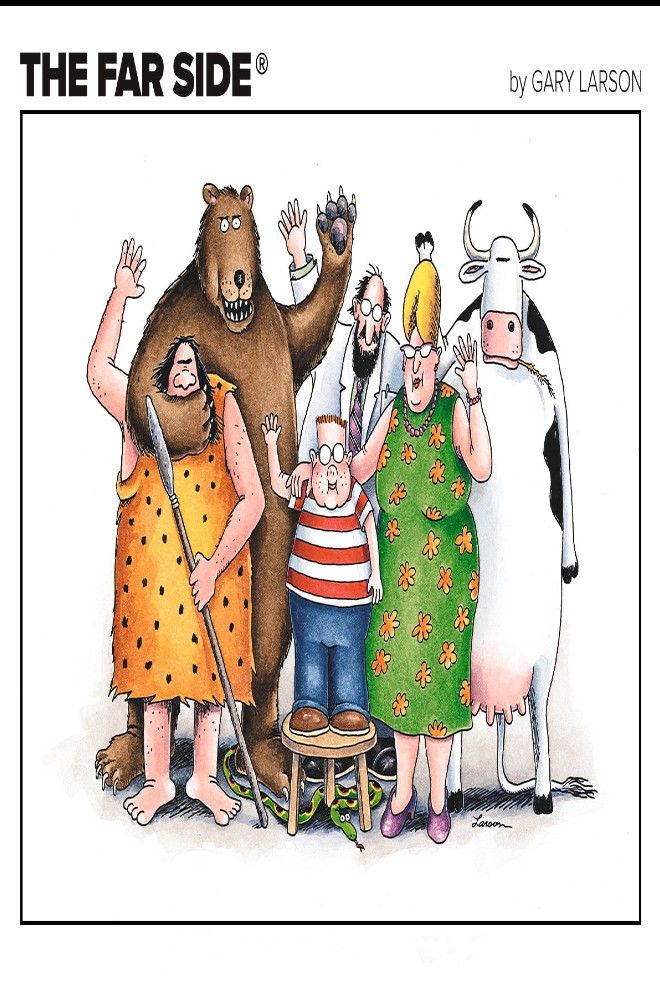
The Far Side
The Far Side is a humorous comic series developed by Gary Larson. The series has been in production since 1979 and features a wide array of comic collections, calendars, art, and other miscellaneous items.

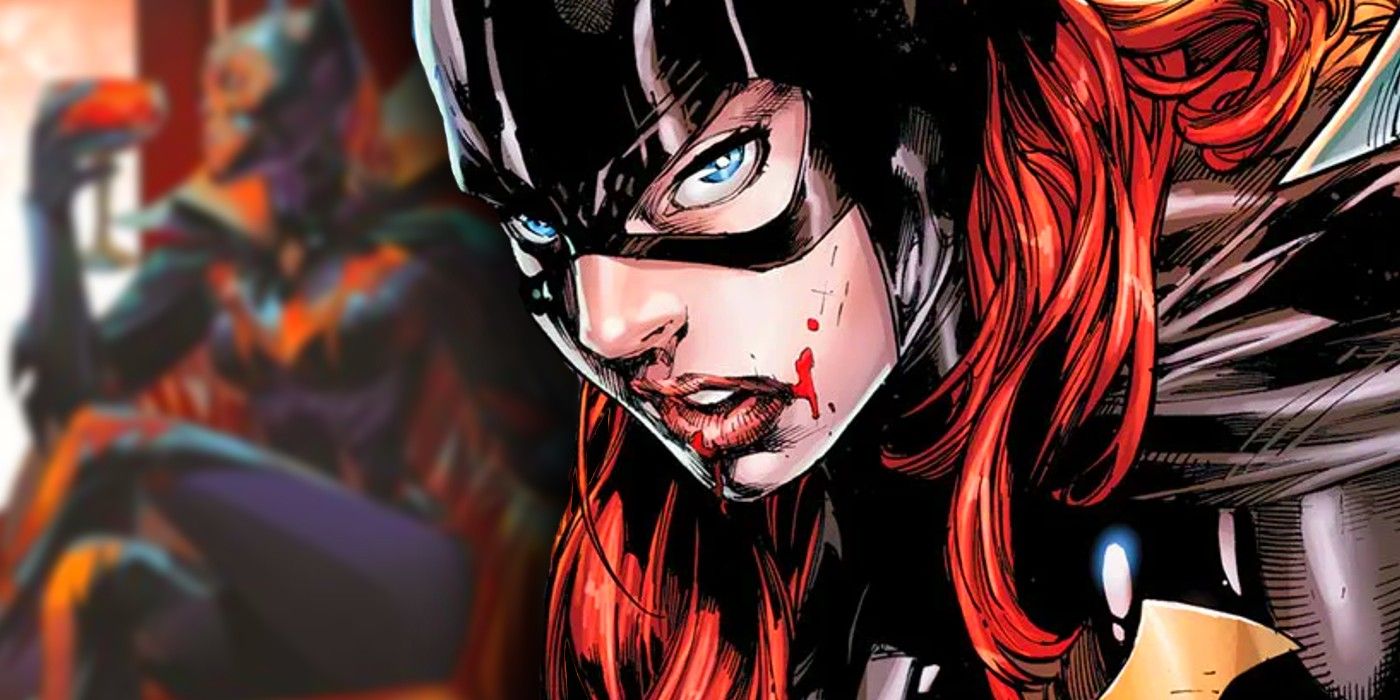
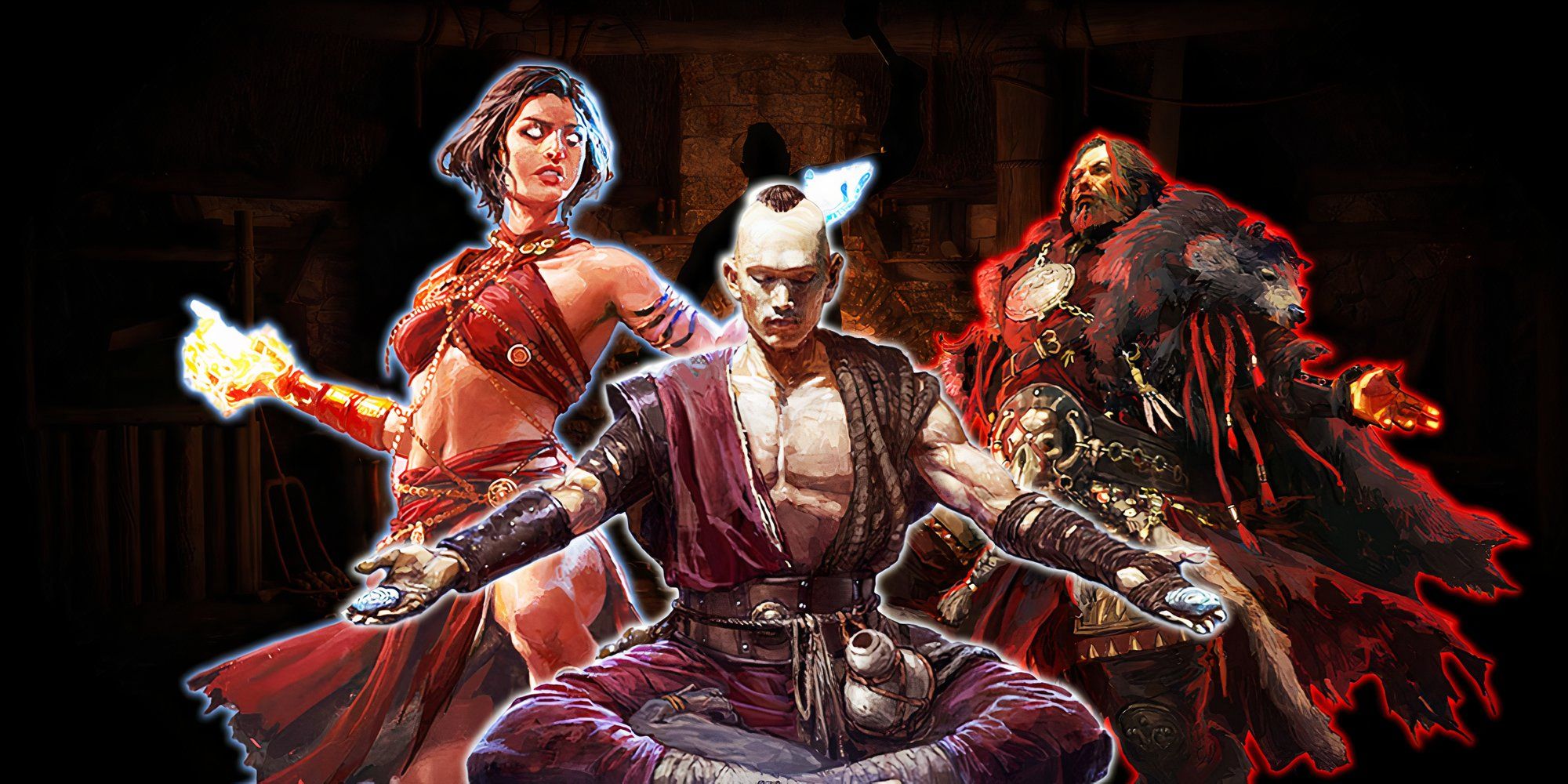
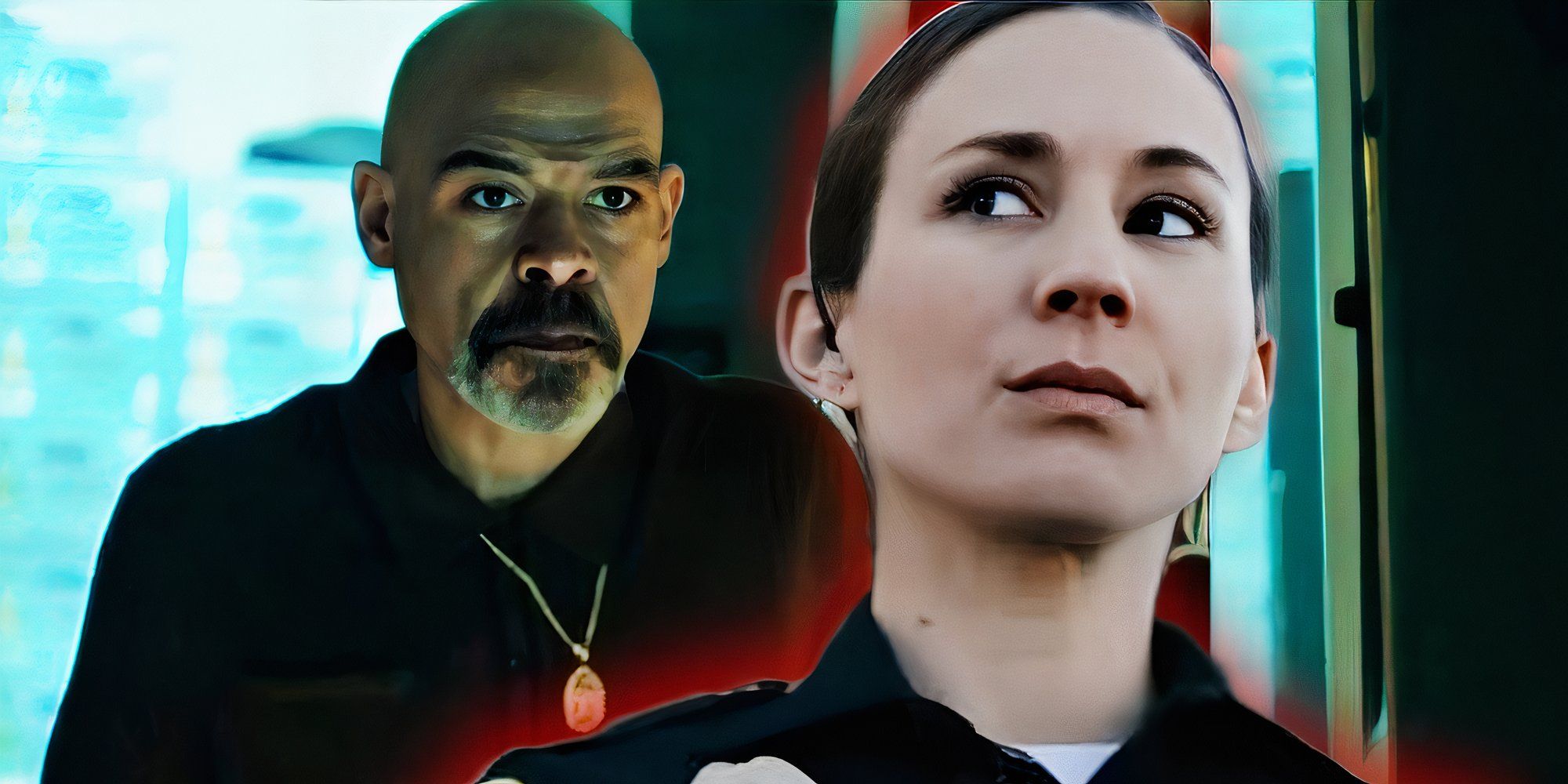





 English (US) ·
English (US) ·